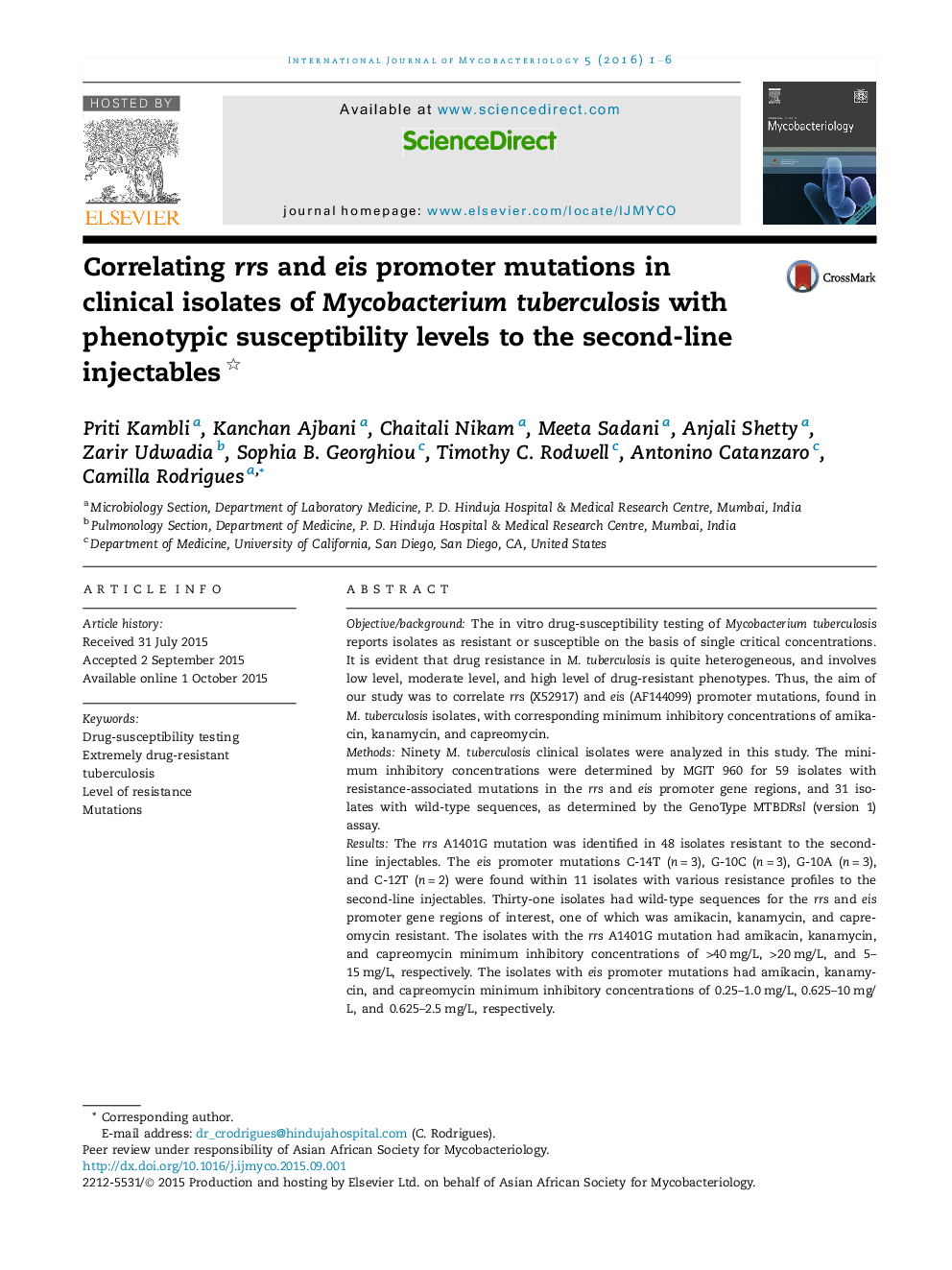| کد مقاله | کد نشریه | سال انتشار | مقاله انگلیسی | نسخه تمام متن |
|---|---|---|---|---|
| 3404983 | 1593304 | 2016 | 6 صفحه PDF | دانلود رایگان |

Objective/backgroundThe in vitro drug-susceptibility testing of Mycobacterium tuberculosis reports isolates as resistant or susceptible on the basis of single critical concentrations. It is evident that drug resistance in M. tuberculosis is quite heterogeneous, and involves low level, moderate level, and high level of drug-resistant phenotypes. Thus, the aim of our study was to correlate rrs (X52917) and eis (AF144099) promoter mutations, found in M. tuberculosis isolates, with corresponding minimum inhibitory concentrations of amikacin, kanamycin, and capreomycin.MethodsNinety M. tuberculosis clinical isolates were analyzed in this study. The minimum inhibitory concentrations were determined by MGIT 960 for 59 isolates with resistance-associated mutations in the rrs and eis promoter gene regions, and 31 isolates with wild-type sequences, as determined by the GenoType MTBDRsl (version 1) assay.ResultsThe rrs A1401G mutation was identified in 48 isolates resistant to the second-line injectables. The eis promoter mutations C-14T (n = 3), G-10C (n = 3), G-10A (n = 3), and C-12T (n = 2) were found within 11 isolates with various resistance profiles to the second-line injectables. Thirty-one isolates had wild-type sequences for the rrs and eis promoter gene regions of interest, one of which was amikacin, kanamycin, and capreomycin resistant. The isolates with the rrs A1401G mutation had amikacin, kanamycin, and capreomycin minimum inhibitory concentrations of >40 mg/L, >20 mg/L, and 5–15 mg/L, respectively. The isolates with eis promoter mutations had amikacin, kanamycin, and capreomycin minimum inhibitory concentrations of 0.25–1.0 mg/L, 0.625–10 mg/L, and 0.625–2.5 mg/L, respectively.ConclusionThis study provides a preliminary basis for the prediction of phenotypic-resistance levels to the second-line injectables based upon the presence of genetic mutations associated with amikacin, kanamycin, and capreomycin resistance. The results suggest that isolates with eis promoter mutations have consistently lower resistance levels to amikacin, kanamycin, and capreomycin than isolates with the rrs A1401G mutation.
Journal: International Journal of Mycobacteriology - Volume 5, Issue 1, March 2016, Pages 1–6